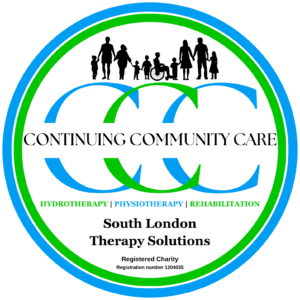CCC Privacy Policy
CCC is committed to protecting your privacy. Our privacy policy indicates to you what information we collect about you and how we use it. By using our services, in any capacity, you agree to the collection and use of information in accordance with this policy. We use your Personal Information for providing and improving our services to you.
Computer browsing information – Log data:
We do not store any of your browsing history when you are viewing our website.
Purchases on our website:
When you make a purchase on ccc-hydrotherapy.org your order details are stored on our secure back frame portal. We are able to track your order and ensure it is completed or not. In the instance of an incomplete order we may use your personal details to contact you and assist you in completing your purchase.
Information Collection and how we use it:
While using our Service, we may ask you to provide us with certain personally identifiable information that can be used to contact or identify you. This personal information may include, but is not limited to, your email address, name, phone number, postal address or other contact information.
Third Party Service Providers:
We may employ third party companies and/or individuals to facilitate our Service, provide the Service on our behalf, perform Service-related services or to assist us in analysing how our Service is used. These third parties have access to your Personal Information only to perform these tasks on our behalf and are obligated not to disclose or use it for any other purpose.
Website Links:
Our website Service may contain links to other sites that are not operated by us. If you click on a third-party link, you will be directed to that third party’s site and therefore their relevant privacy policy.
Marketing Opt-in:
By providing your details via the CCC website or by purchasing CCC Courses or Products, you are agreeing to receive marketing emails related to CCC Courses, Services and/or Products. You will be able to opt-out of emails at any time by contacting us.
Web based request forms:
When you fill out the forms on our website (ccc-hydrotherapy.org), we store the data you send us. We may use this information to improve customer service and for marketing purposes. This data is NOT passed on to any third-party organisations and resides in secure web-based database.
In clinic forms:
When you visit any of our premises for a 1:1 session you will fill out a standardised registration form. This form will collect the following details:
- Name
- Address
- Date of Birth
- Telephone Number
- Email address
- GP details
- Private medical Insurance (PMI) details (if applicable)
The purpose of this information is to allow your clinician to ensure they manage your case with the relevant due care and consideration for your age, your requirements and your program. The PMI details are used to bill your insurer as appropriate or to communicate directly with them if appropriate. None of your information is passed to a third party unless under your explicit consent to release details.
Your PMI may ask for reports of your sessions but this will only occur with your consent.
You may request us to write a letter to a school, a consultant or another person of interest to you. In doing so we will use your name, DOB and relevant medical details on that letter. You will also receive a copy of the letter should you so choose.
E-mail use Policy:
Your email address will be added to our database and may be used for contacting you in regard to your sessions, your programs, CCC marketing campaigns, offers and other generalised information. If you do not wish to receive any of this information you can unsubscribe at any time by emailing croydontherapyclinic@gmail.com requesting this.
Lawful disclosure:
We will disclose your Personal Information where required to do so by law or in accordance with an order of a court of competent jurisdiction. We will also disclose your information if we believe that lawful disclosure is necessary to comply with the law and the reasonable requests of law enforcement or to protect the security or integrity of our Service.
Security:
The protection of your personal information is vitally important to us. We will strive to protect your Personal Information in all means reasonably required by us to do so. However, as no form of data transmission is 100% reliable we cannot guarantee its absolute security. Therefore, we make no warranties as to the level of security afforded to your data. We will however always act in accordance with the relevant UK and EU legislation.
Children’s Policy:
We do not knowingly collect personally identifiable information from children under 13. If you are a parent or guardian and you are aware that your Children has provided us with Personal Information, please contact us.
Changes to Privacy Policy:
We may update our Privacy Policy from time to time. We will notify you of any changes by posting the new Privacy Policy on this page.
Jurisdiction:
This Policy shall be governed and construed in accordance with the laws of England and Wales, without regard to its conflict of law provisions.
Further Information:
If you have any further questions regarding our privacy policy please contact us directly.
CCC Legal Policies
By using the CCC website and accessing any and all of the contents on this site you are deemed to have entered into an agreement with CCC and are therefore bound by the terms set out below.
Intellectual Property:
The contents, design, images, blogs, back frame and underlying code of this web site remain the intellectual property of CCC at all times. You, or any other company linked to the user accessing the site and its contents, may not use or reproduce the content on this web site for any reason without express written permission from the CEO or CCC Trustees. No other members of the CCC team has the authority to allow use of the contents on ccc-hydrotherapy.org.
Changes to www.ccc-hydrotherapy.org:
CCC reserves the right to change, modify, suspend, add or remove portions of this web site at any time and to restrict the use and accessibility of the web site as it sees fit.
No Warranty, Disclaimer of Liability & Indemnity:
CCC makes no warranty concerning the content, products and services available on this web site. CCC Limited does not guarantee the accuracy, content, times, weights, sizes or any other element of the products and services available on this web site. In no event will CCC Limited or its suppliers be liable for direct, special, incidental, or consequential damages (including, without limitation, damages for loss of business profits, business interruption, loss of business information or other pecuniary loss) arising directly or indirectly from the use of, failure to use or reliance on this web site.
CCC and its suppliers will not be liable for any delay or failure in performance or interruption of the delivery of the content on this web site resulting directly or indirectly from any cause or circumstance beyond its or our reasonable control. This includes any natural disasters, equipment failure, electrical failure including internet access and performance, or any other governmental actions.
Jurisdiction:
This legal policy is governed by English law. The parties agree that the courts of England shall have exclusive jurisdiction to settle any dispute which may arise out of, under, or in connection with these Terms or the legal relationship established by them, and for those purposes irrevocably submit all disputes to the jurisdiction of the English courts.
Registered Charity Details:
CONTINUING COMMUNITY CARE
Registration Number – 1204035
1 Coombe House
Coombe Road
Croydon
Surrey
CR0 5RD
Phone: 07950176113
Email: continuingcommunitycare@gmail.com or ccc.hydrotherapy@gmail.com




















